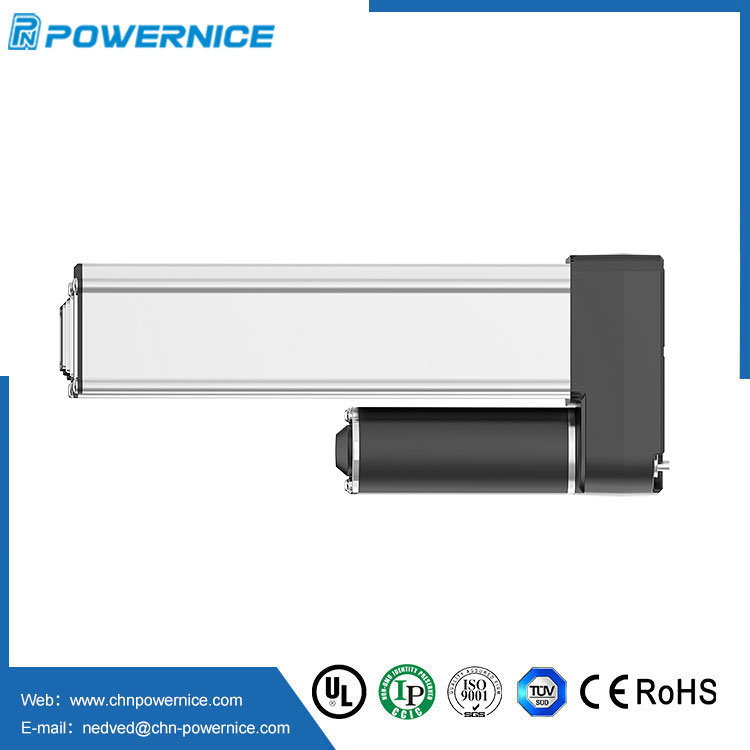Principle of Linear Actuator
2023-10-17
Typically, an electric motor is mechanically connected to rotate the lead screw. A lead screw has a continuous helical thread (similar to the threads on a bolt) machined around its circumference along its length. Screwed onto the lead screw is a lead screw nut or ball nut with corresponding helical threads. The nut is prevented from rotating with the lead screw (usually the nut interlocks with the non-rotating part of the actuator body). As the lead screw rotates, the nut will be driven along the threads. The direction of movement of the nut depends on the direction of rotation of the lead screw. By connecting a link to a nut, the motion can be converted into a usable linear displacement. Most current actuators are built for high speed, high force, or a compromise between the two. When considering an actuator for a particular application, the most important specifications are usually travel, speed, force, accuracy and life. Most varieties are mounted on dampers or butterfly valves.There are various types of motors that can be used in linear actuator systems. These include DC brushed, DC brushless, stepper motors, or in some cases, even induction motors. It all depends on the application requirements and the load the actuator is designed to move. For example, a linear actuator using an integrated horsepower AC induction motor to drive a lead screw can be used to operate large valves in an oil refinery. In this case, precision and high motion resolution are not required, but high force and velocity are required. For electromechanical linear actuators used in laboratory instrumentation robots, optical and laser equipment, or XY stages, micron-scale fine resolution and high precision may require the use of fractional horsepower stepper motors with fine pitch lead screws.
There are many variations of electromechanical linear actuator systems. It is critical to understand the design requirements and application constraints to know which one is best.A linear actuator is an actuator that creates motion in a straight line, as compared to a conventional circular motor. Linear actuators are used in machine tools and industrial machinery, computer peripherals such as disk drives and printers, valves and dampers, and many other places where linear motion is required. Hydraulic or pneumatic cylinders inherently produce linear motion. Many other mechanisms are used to generate linear motion from rotary motors.



